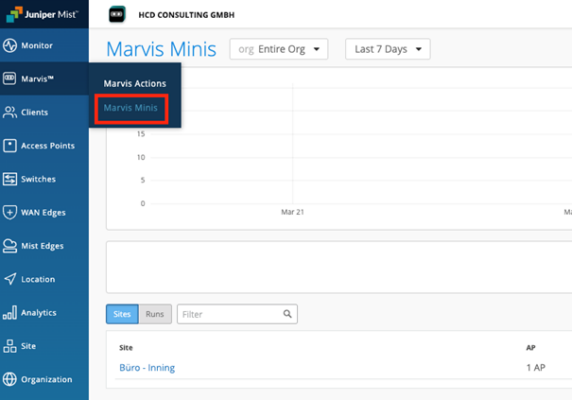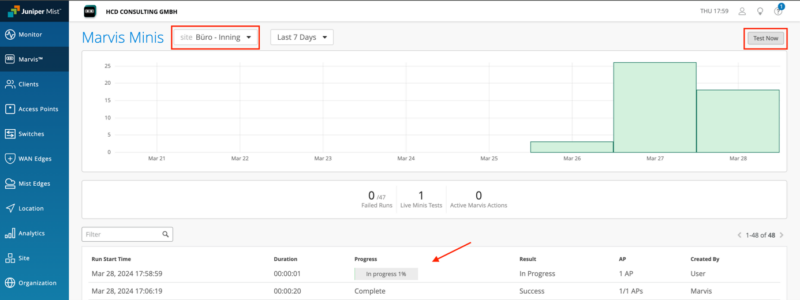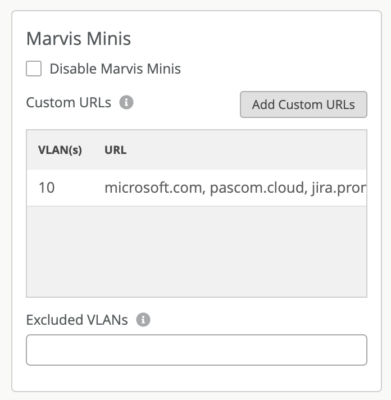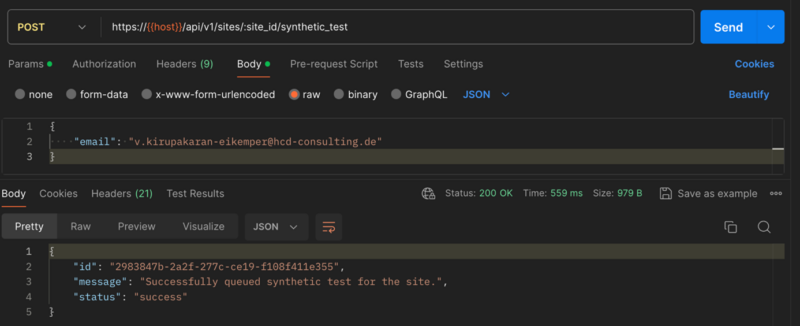Marvis Minis are now live on the Juniper MIST platform!
If you work with Juniper – especially with Juniper MIST – you’re almost sure to have heard about this “digital experience twin”. With all the hype since it was announced in January, it would have been hard to miss! Our clients have also been looking forward to the new feature and have had quite a few questions for us:
- What exactly are Marvis Minis?
- Do they generate real traffic that would negatively affect network performance?
- What are the use cases for the new feature?
- How well can it be configured?
- Do you need an additional subscription for Marvis Minis?
These are just a few of the questions that our clients – and we ourselves – have had. And since it’s us we’re talking about here, we couldn’t just leave these questions unanswered. The only solution was to grab a couple of access points and put the new Marvis Minis through their paces.
Stay tuned until the end of this article to get a detailed look at the inner workings of this new feature. You won’t be disappointed!
What are Marvis Minis?
Let’s start at the very beginning and answer the question of what Marvis Minis actually are.
Marvis Minis is a cloud-based container service that carries out certain tests on Juniper MIST access points by simulating client traffic. The results of these tests reflect the user experience of a real client. The tests are carried out at regularly scheduled intervals, so usable data is continuously available.
Do they generate real traffic?
The short answer is no. No real traffic that would have a noticeable impact on network performance is generated. Marvis Minis use synthetic tests, which only check the availability of defined and learned applications. These tests are not run simultaneously on all the APs. Our tests showed that one synthetic test is started per test run, per switch. However, if the synthetic tests report anomalies or problems, the Minis “scatter” onto additional APs to see whether the problem exists only in specific areas of the network or across the board. In addition, Marvis learns when the network’s peak usage times are. The higher the network load, the fewer synthetic tests it runs.
How are the synthetic tests triggered?
There are a few different ways to trigger them. They are carried out every hour by default – something that cannot be changed in the current version. But there are also ways to manually initiate a test. In addition, certain events trigger a test to run:
- Creation of a new site
- Addition of new network devices
- Addition of new DHCP and DNS servers
- Configuration changes
- Firmware upgrades
- Rebooting a network device
- Identification of an anomaly
The Minis aren’t constantly running tests, by the way. The required objects, such as virtual interfaces, are spawned for each test and removed as soon as it is completed.
What are the use cases for Marvis Minis?
It’s totally reasonable to ask what exactly the use cases for the new service are. After all, we already have Marvis. What do we need the Minis for?
Marvis takes a proactive approach to recognizing network problems before they can affect the network’s performance or availability. It does this by collecting, normalizing and interpreting telemetry data. Logically enough, the accuracy of Marvis’ analysis depends on exactly these telemetry data.
Marvis Minis come into play when there aren’t enough telemetry data for Marvis to analyse.
One such scenario would be when a new site is set up but has not yet been deployed. In this case, no clients are connected, so no data can be produced. Marvis Minis uses synthetic tests to help admins test a new site before even a single real client has been onboarded.
Synthetic tests also make it possible to test configuration changes immediately after they are committed – for example, if you make changes outside of regular working hours.
Another use case would be to supplement telemetry data, even if no real clients have been active in the network for some time. This ensures that Marvis always has enough data to carry out a precise analysis.
What exactly do the Minis test?
It is possible to run a variety of tests. They are carried out on a VLAN basis – admins can define the VLANs and also tell Marvis Minis not to run tests on certain VLANs. In the current version, you can test the availability of the DHCP server and the DNS servers that have been set up, as well as ARP requests to the relevant gateway, defined applications via Curl, radius services, and the transmission speed at the WAN interface.
If you don’t configure the minis at all, they will run tests on their own, using machine learning to learn which applications from which VLANs are used most frequently.
How do you operate and configure them?
Now we’ve explained how a few things work in theory, but how does it really look in practice?
Marvis Minis now have their own tab in the Juniper MIST platform. You can find them under Marvis > Marvis Minis:

Here, you can find an overview of all tests that have been run. You can view all tests from the entire organisation, or filter them by specific sites. When you select a specific site, you’ll find a button that you can use to manually run a synthetic test:

If you want to see the report from a certain test, just click on the appropriate line. This is roughly how a report will look:

If a test fails to run, as in the example below, clicking on the test will also send you a PCAP file. Use this file to have an analyser like Wireshark inspect the traffic. The synthetic telemetry data generated by the Minis is fed into the Marvis AI Engine so that it triggers the familiar Marvis actions in the same way as the telemetry data from real clients:

You can configure the VLANs and applications that should be tested at the organisational level under Organization > Settings and at the site level under Organization > Site Configuration > {Site Name}. This is also where you can deactivate the Marvis Minis entirely:

Like so many things in the Juniper MIST platform, the API can do even more than what you see in the dashboard.
For example, you can use API calls to start synthetic tests on a selected AP, as well as to define which services should be tested. The radius tests can currently only be triggered via API.
When you trigger a test via API, you have the option to have a comprehensive test report emailed to you. To demonstrate, I’ve set this up in Postman:

Prerequisites for Marvis Minis
If you’ve read this far and your fingers are (quite understandably) itching to try Marvis Minis for yourself, you’re probably wondering how you can get your hands on it.
There are only two points to keep in mind.
- To support Marvis Minis, APs must have a firmware version of at least 0.14.29313 – the latest version at the time of writing. We are using this firmware on our own APs and have no negative experiences to report in this regard. In addition, all APs on a site must have this firmware; otherwise, the feature will not work.
- You need an active Marvis subscription. Juniper had announced that an additional subscription would not be required for Marvis Minis, and they are keeping their promise. If you already have an active Marvis subscription, you’re ready to go and can start testing whenever you like.
Summary
We see Marvis Minis as a very interesting, very promising service with a lot of potential. The Minis help our old friend Marvis do his job even better, and help us to understand our networks in more detail and to troubleshoot them more effectively.
What do you say to the Minis?
If you would like to take a look at the Minis with us, please get in touch!

 Deutsch
Deutsch